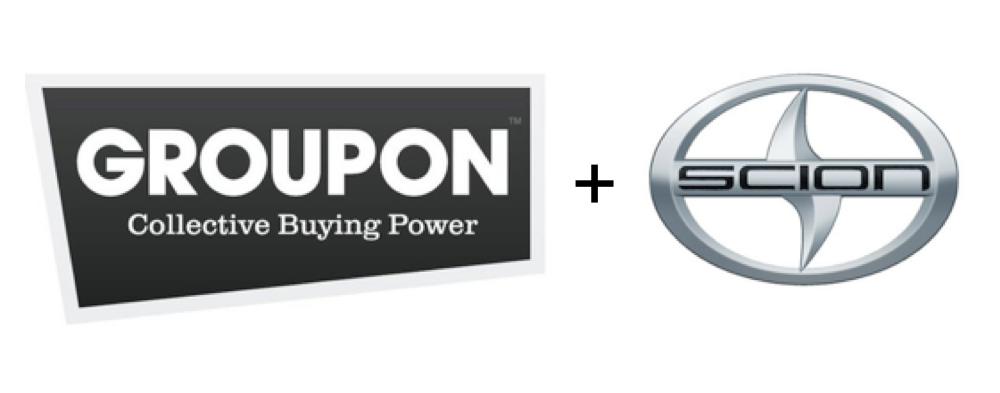Groupon, the Fix for Scion

Recently, Groupon offered members a chance to pay $199 for a $500 discount towards the purchase or lease of a car from a Detroit dealership. Skeptics bashed the deal from left and right, and a few days later, the facts were in and only 4 people had hopped on the deal. There are many reasons why this particular deal was such a flop. After purchasing the Groupon, the buyer is only reaping a measly savings of $301 out of the price of a car. Even assuming you could find a ride for ten grand, that’s only a savings of 3%, a tiny number compared to the smoking double digit percent savings Groupon deals is known for. On top of that, there’s no guarantee that the dealer won’t just roll the amount into the price of the car or financing. There were too many variables involved for this car coupon to work out.
But before we chuck that idea out the door, let’s think harder about where a car coupon can make sense. Social deal sites like Groupon and LivingSocial are the Internet’s latest craze. By paying a small fee, a user can buy a coupon for significantly bigger savings from these sites. Once there are enough buyers for a deal, then the coupon is activated. Gen X/Y folks have been early adopters of these new deal sites. They are tweeting and buzzing about the latest deals, whether it be a cheap massage, or skydiving lessons. While not all younger deal hunters are interested in cars, there’s plenty of interest from automakers to get them hooked on a brand early in life. The brand that best epitomizes this sentiment is Scion.
The median age of a Scion buyer is a youthful 39 years old. While that may not be the urban hipster seen in Scion’s edgy advertising, it’s a solid decade and a half younger than a geriatric median buyer age of 54 for parent company Toyota . One of Scion’s selling points is a low no-haggle price. The low price makes the cars affordable, and the no-haggle “Pure Price” keeps it simple for first-time car buyers. That was all sugar and candy until the recent wave of competitors in the sub-compact and compact segments. The 2011 xB retails for a hair over $17k. For that kind of money, the typical broke college student has her choice of a Hyundai Elantra, a Ford Focus, or a Chevy Cruze for about $16.5k, give or take a few nights eating out. All of these choices have been recently redesigned or newly introduced, while the xB has only gotten mild cosmetic refreshes since 2008. If we throw sub-compacts into the price fight, then it’s not even a close comparison. Other manufacturers also allow their dealers to negotiate the sale price, instead of forcing a standard fixed price. Haggling is stressful no matter what you’re buying, but with the potential to save hundreds to thousands and get a better car in the process, the smart money is to suck it up and haggle. Even if absolute volume isn’t the top priority for Scion in their quest to increase youthful market share, having this much competition suddenly makes those “Pure Priced” Scions sitting on dealer lots a heavy financial liability.
Scion does currently offer a $1k incentive to recent college graduates and active military serviceman. Both these promotions are in line with their brand image, so they don’t risk alienating their next Gen X/Y buyer. But with a lagging economy and so many tempting competitors, it makes sense for Scion to add more incentives. Slapping cash on the hoods would be the easy answer, but cash rebates are a temporary band-aid and sets a dangerous brand damaging precedent. Instead, Scion should embrace a social and creative marketing strategy. A $1k Groupon with playful game elements for current models would help move cars off lots, but more importantly, the deal keeps the Scion brand strong among the young segment of car buyers. That’s what I call killing two money sinking birds with one stone.

